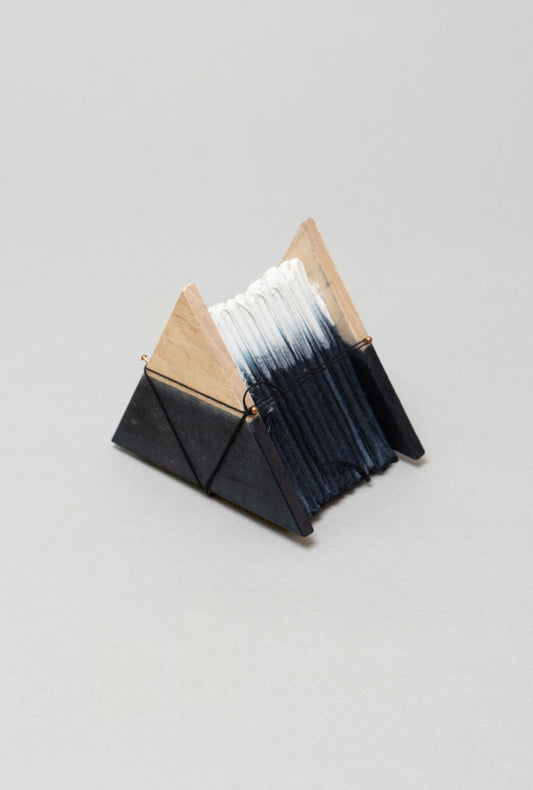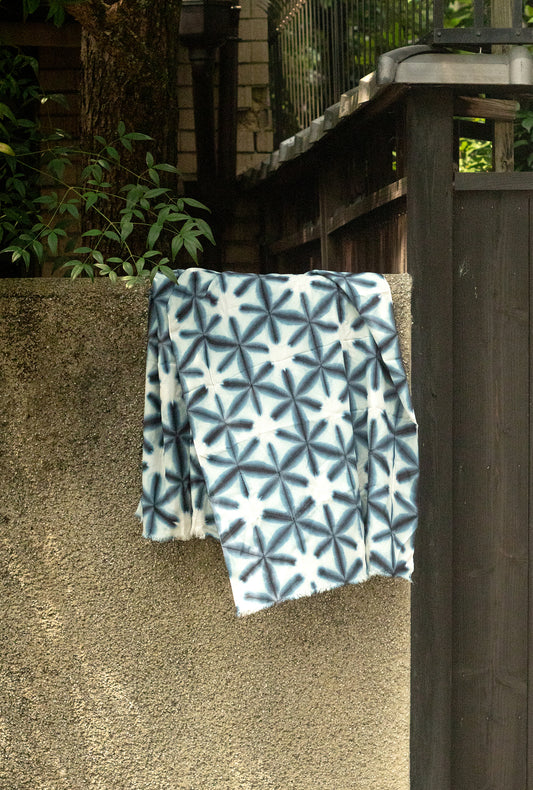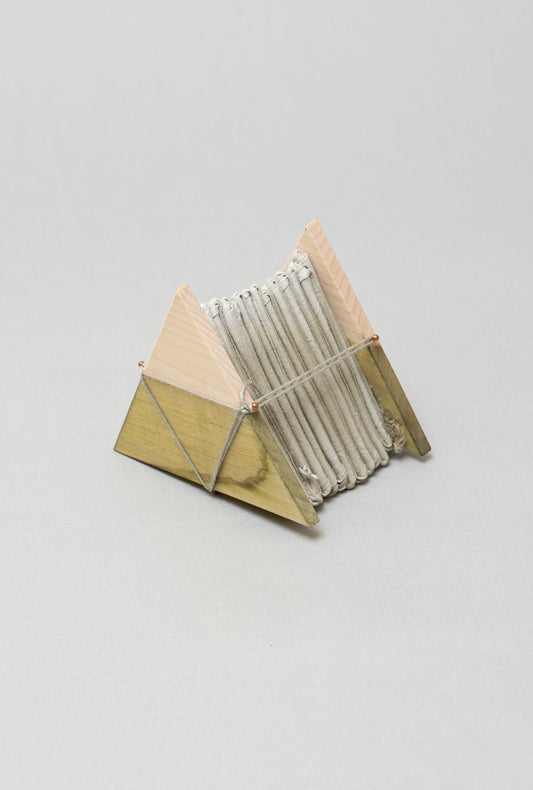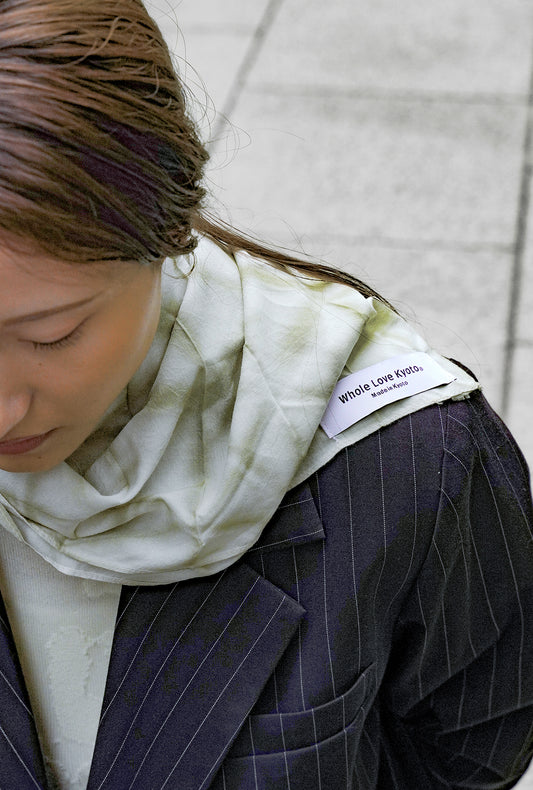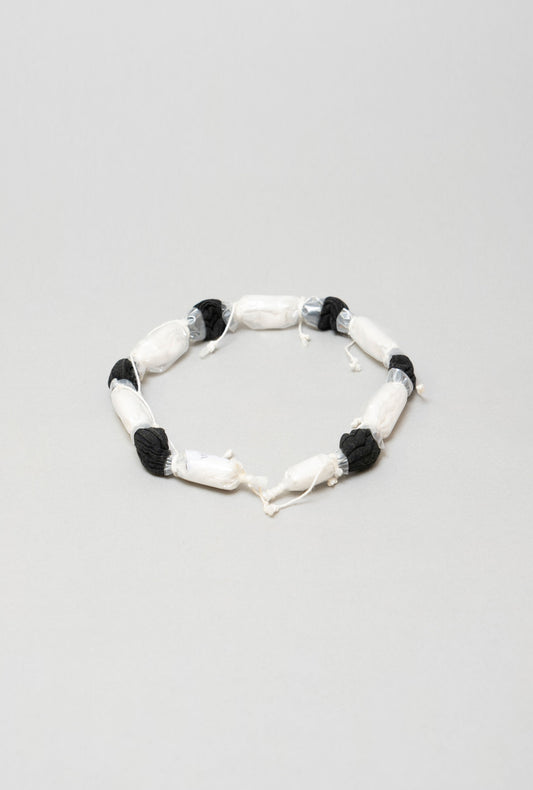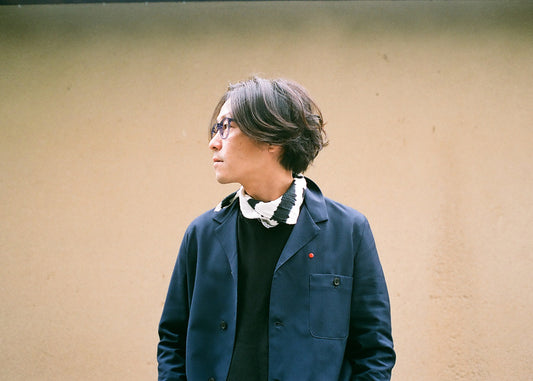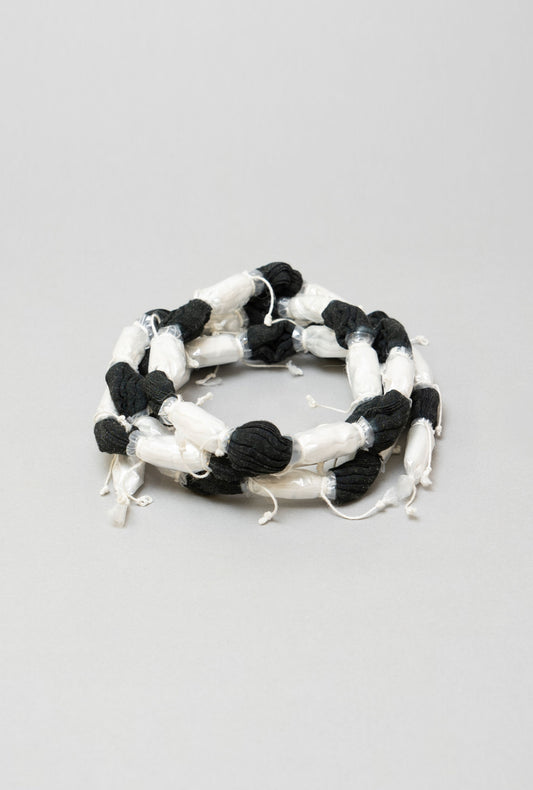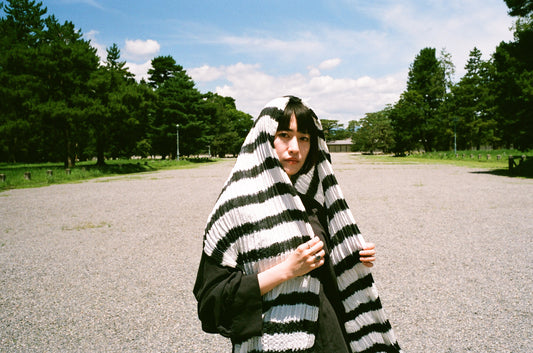
Tabata Shibori|tie-dye technique|02
Share
#02 Let many people know
The world of tie-dye has endured for over 1,400 years. Kazuki Tabata san of “Tabata Shibori” was drawn to the world of tie-dye by the magic of handicraft from the machine industry. Each piece of tie-dye has a different finish, and the fact that it is all done by hand gives it a unique flavor. The reason it is not well known is not because the technique is bad. The works that Tabata san creates are all fresh and new to us. He talked to us about the charm of tie-dye.

—Are you particular about the fabric you use?
The traditional craft called "Kyo shikanoko shibori" is limited to silk. But silk is a very expensive material, and it is difficult for ordinary people to afford it. Therefore, I wanted to make shibori products using cotton or linen at a low price so that many people could know about it. The first requirement is that the fabrics must be washable. I also think about whether the fabrics can be used when needed. So, I think about it a lot.
──Is the dyeing process different depending on the fabric?
Yes, it does. Even if the same dye is used, silk may have a lustrous finish while cotton may look faded. Silk products cannot be washed, but if the fabric is washable, it will be fine even if it is sweaty. For example, if you dry clean your clothes, the color will change rapidly. If it is exposed to the sun, the color tends to fade, but some people enjoy that. Cotton fabrics can be washed, so there is almost no chance of the color changing. The color may fade after a few years, but it is much better than silk. It's not so much a matter of being special, but more a matter of how easy it is to use. Polyester is also very popular these days. However, when shibori is used, the dye does not adhere to nylon, so the dyeing method changes. The dyeing process is like "pressing" the dye into the fabric. When this happens, only large factories can do it, so hand dyeing is no longer an option.
──So everything is done by machine?
That's right. We put it in a machine and pressurize it like an electric cauldron. Originally, the dye was not applied to the nylon so that the water would bounce off the umbrella. Then the electricity forces the dye into the fabric and the dye is "dyed".
── If the items are dyed this way, will the dye not come off even if they are washed?
No, it cannot be removed. Such dyeing is also beyond the scope of "hand dyeing," so it is categorized as not tie-dyeing. But if I ask if it is possible to do shibori using the press method, it is not possible. The vinyl or threads that are wrapped around the fabric may not withstand the heat and melt. It is impossible to prevent dyeing, and everything underneath will be dyed as well. Even if you dye under pressure, you can't do Shibori. Even if you can dye, you cannot do shibori. You can do shibori on polyester, but you can't dye it. So it depends on the material and the fabric.

Knowledge is required to understand "value".
──It is beautiful after dyeing, but the shape before dyeing is also very interesting.
It's hard to imagine, isn't it? You can only see it as a product, but the process is very interesting. On the other hand, if this kind of work is shown to the world, some people might wonder how much work it takes, so those who sell products say, "Please don't show us your techniques. I think it is better to show them. In the past, it was customary not to show the work of the craftsmen, and people didn't even know who was doing the work, so the craftsmen were closed off. But when you go in, there are many very kind people. The first time I went to the dye shop, the craftsmen were grumpy. Even if I wasn't satisfied with something I wanted dyed, there was hardly a word between us, and they would just say, "Well, I'll take care of it. But after I studied dyeing and gained knowledge, I began to understand why things were the way they were, and by communicating this to the dye shop, I was able to deepen my understanding with them. By gaining knowledge, it became easier for me to express my opinion and for them to understand. It is the same with everything. If someone who doesn't know anything about something just points it out, he or she can't explain it, and I think, "That's enough. It is very important to gain knowledge and to engage with others.
──Without knowledge, you don't know the true value of things. That's really touching, isn't it?
It's true. If you just look at the finished product and say, "I wish this part was arranged better," you don't know how hard it is until you see the work that goes into it. I think the appeal will be much more apparent once you try it and learn about the time and effort that went into it.

A city that is rough but caring
──About Old is New
There are a lot of things that are being put back because people don't know about them. Many people knew about tie-dyeing in the old days, but people today often don't know about it. That is why I started "Sekka shibori" about 10 years ago. It was originally a diaper pattern. It was dyed to cover the stains on the diaper fabric with color and to make it look cute. When older people see this pattern, many of them say, "Oh, it's a diaper pattern, it brings back memories," but people of our generation don't even know about it. People from overseas did not want to wear diaper patterns on their clothes, so they did not spread from Japan.
Other techniques were brought to China and other countries, but only Sekka shibori was known in Japan. Only the last heirs of the Sekka shibori technique were able to do it, but about 3 or 4 years ago, an acquaintance of mine said to me, "Please try to do Sekka shibori. I said no, but whether I could do it or not, I decided to try. I did it many times, and two years ago it somehow took shape and I was finally able to do it. At that time, only he and I could do it, and after that I taught it at universities and on the Internet, and it spread. It is a "diaper pattern" that has been reset, so old is new.
──That's because there was a lot of trial and error before we found the right shape.
There was a time when no matter how many times I dyed it, it would end up in the trash and not make any money. At first, I was told to learn from the successor, but I wanted to do it myself rather than learn from them.
──What kind of city is Kyoto to you?
Many of the street names are related to water. For example, Kawaramachi and Shirakawa-dori. In the past, and even now, Kyoto is a land of abundant water, because there is an earthenware the size of Lake Biwa under the Kyoto basin, so there is plenty of water. I think that is why the craftsmen gathered here. The people may seem cold, but in fact they are all very friendly, and there is a strong horizontal connection. Kyoto has a lot of division of labor, which allows people to focus on one thing at a time, so high skills are gathered and good products are made. This is the traditional craftsmanship of Kyoto. Even if they are cold, it is out of love, and there is a reason for that.
(End)

